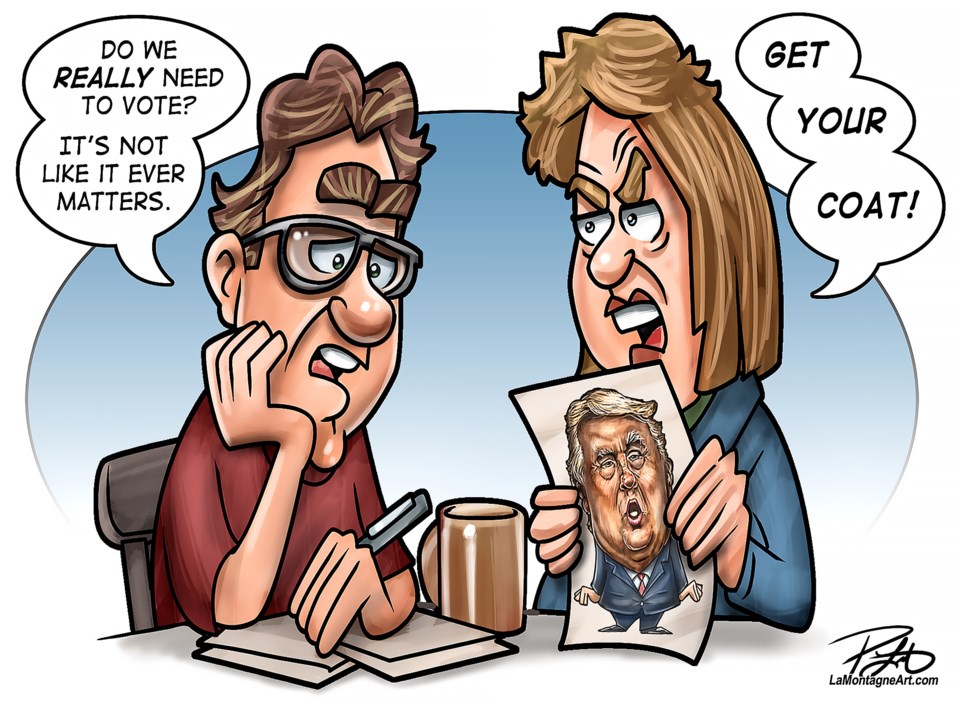When people wake up across the Bow Valley on Tuesday (April 29), they’ll have a new Member of Parliament and the federal governance landscape will be clearer than it has been for the last year.
The Canadian public and Yellowhead residents – which includes Banff, Canmore, Lake Louise and MD of Bighorn voters – will determine the federal political future both regionally and nationally.
In both cases, there’s still a relative unknown on the outcome.
With a new federal riding and no incumbent, the Yellowhead riding is starting from square one in selecting a new federal representative, which has led to roughly a dozen candidate forums to answer questions on the diverse needs of residents.
The Yellowhead riding is one of the most diverse and geographically largest in Alberta. Stretching from Grande Cache in the north to Banff and Canmore in the south to Carstairs and Sundre in the east, the sprawling riding has national and provincial parks, improvement districts, municipal districts and summer villages.
The riding, as all candidates are learning, can take a full day’s drive to get from one spot to the next.
Though polling has Yellowhead as a Conservative stronghold, a first test run of the new election district and no incumbent running, means it’s still an open playing field.
Though it only has about 115,000 people, it features a smorgasbord of issues ranging from tourism, environment and wildlife, housing, affordability, healthcare, agriculture and farming, oil and gas, and manufacturing.
In the Bow Valley, the impacts of tourism are a focus for voters, with millions of visitors putting a strain on housing, infrastructure and the environment and wildlife. The industry, however, is also the key economic driver throughout the region.
With Banff, Canmore and Jasper now in the same riding, there is potential for the municipalities to have a stronger voice federally when it comes to expressing concerns commonly faced by the mountain towns. The three municipalities are key tourism cogs, but wildlife, housing and affordability concerns are consistent themes felt by their voters.
In other areas of the riding, key issues have little concern for the valley. Agricultural concerns in Sundre, manufacturing in Hinton and oil and gas in Edson are likely to be distant thoughts to voters in Banff, Canmore and Dead Man’s Flats.
The impacts of American tariffs are likely to be more significant for areas dependent on manufacturing, forestry and agriculture, but it’s unlikely to sway a change in vote for the Conservative strongholds within the riding.
Nationally, the political future of Canada is murkier than Yellowhead's.
With the Liberal Party having a minority government since 2021, it was only a matter of time until an election was called before the scheduled Oct. 20, 2025 date. The Justin Trudeau government had long been waning in popularity, leaving the federal government on life support for more than the last year.
Nationally, the political sphere drastically changed once Trudeau resigned and Mark Carney became Canada’s leader. Since Trudeau’s announcement he was stepping down – with him being a lightning rod for the country’s woes – the Liberal Party has bounced back.
What was once thought to be a sure-fire Conservative Party majority is now relatively unknown as Conservative leader Pierre Poilievre clings to Trudeau like the ex who got away and Carney focuses on economic concerns.
Polling, however, shows the Conservatives and Liberals both as distinct possibilities in forming the next federal government.
The national election will likely be decided by voters in Ontario and Quebec, which is par for the course, but for valley residents, whoever is selected needs to be a strong representative for the region.
With the diverse needs of Yellowhead, it’ll be no easy task, but is vital in being a voice for residents.



